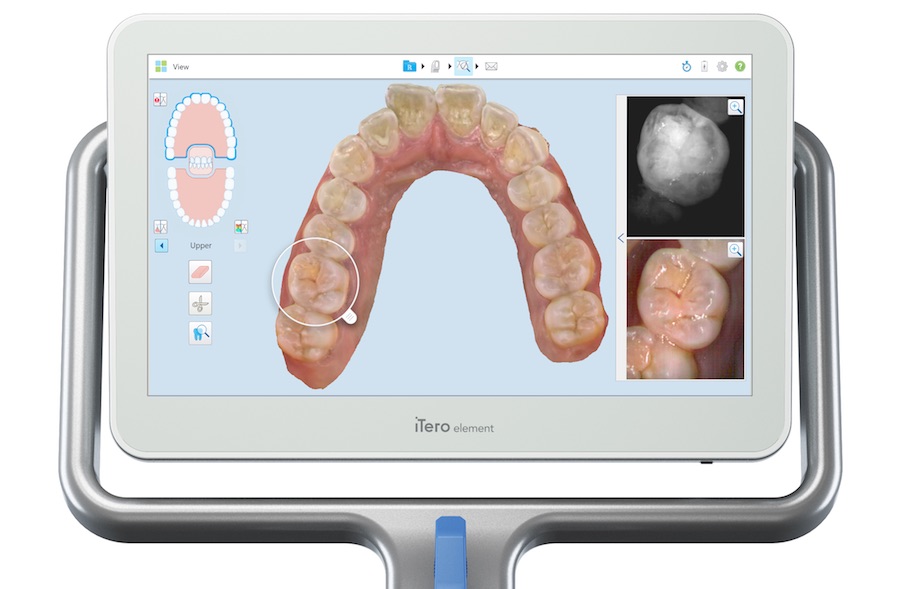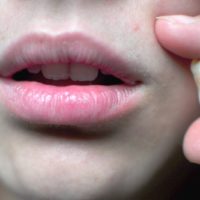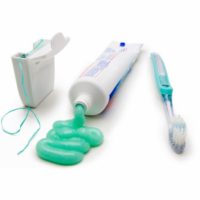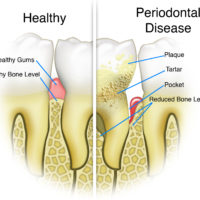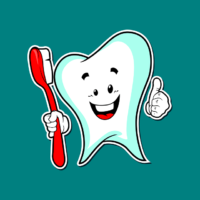As with virtually all fields of medicine, technology in dentistry has advanced in quantum leaps over the last 10 years—from CT scan advancements to lasers, DIAGNOdent™ to CEREC® computer-assisted restoration procedures—and is poised to take similarly stunning strides in the third decade of the 21st century.
SMART TOOTHBRUSHES: It was inevitable that our now-14-year-old app-based lifestyle (the iPhone was released in 2007, believe it or not) would extend to daily hygiene. So, with a focus principally on tracking brushing habits, which can be then monitored on a mobile device, the market for smart toothbrushes is fast expanding. At (or near) the top of its price points is the Oral-B iO series ($249.99), which adds app-readable functions like a pressure sensor to keep users from brushing with too much force and 3D modeling of teeth to better target hard-to-reach spots. Mid-tier models include the Philips Sonicare ExpertClean 7300 ($119.95), offering a smartphone-based progress report to improve brushing efficiency and effectiveness, as well as a brush head wear monitor. On the thrifty end is the Hum by Colgate ($69.99), with an accompanying app that tracks tooth coverage during brushing (plus its frequency and duration), then offers guidance tailored to a user’s brushing style. Notable in Hum’s marketing campaign is Colgate’s focus on millennials by emphasizing social media and engaging influencers, along with an offer of rewards points that can be used to buy products at an in-app shop.
VIRTUAL REALITY: Its widespread use in general dentistry occurring just within the last five years or so, virtual reality technology—which creates an immersive, computer-generated model of a patient based upon 3D, CT, and other imaging methods—is gaining ground as a teaching tool for students, in part as a means of essentially rehearing oral surgery in order to improve outcomes, among other applications (see our CT scan blog post and more information about our iTero Intraoral Scanner for how 3D modeling is applied at 20/20dentistry).
Apart from its value to the dentist or oral surgeon, and as an alternative to TV use or other distraction techniques, making VR imaging available for patients to see has been shown to reduce both anxiety and perceived pain, particularly among children. And where this tech is likely to go next, according to “Virtual reality (VR) applications in dentistry: An innovative technology to embrace,” in the Indian Journal of Dental Research (2020, Volume 31 Issue 4), is expanding its reach in real-time applications, such as “monitor[ing] patient information to increase comfort.”
STEM CELLS: One of the most remarkable and promising of treatments is the use of stem cells to regenerate lost or damaged bone, periodontal tissue, and even teeth themselves. Though not yet FDA approved for this purpose, dental application of such cells—which have the advantage of being readily obtained from lost or removed teeth—have demonstrated effectiveness in regenerating tissue in 80% of clinical trials selected for their comprehensiveness by the authors of a 2020 article in the journal Stem Cell Research & Therapy. Among the 20 selected studies, 16 showed clinical benefits. Nearly as remarkable was the finding that there were no reported adverse side effects of stem cell therapy.
Research is ongoing, including a 2020-initiated joint study by Karolinska Institutet (the Medical University of Vienna in Austria) and Harvard University. Its goal is to comprehensively identify cell populations in both growing and non-growing mouse and human teeth teeth, with the hope of establishing best practices for stem cell regeneration. An article detailing the study’s findings was recently published in the journal Nature Communications.
“We hope and believe that our work can form the basis of new approaches to tomorrow’s dentistry,” read part of that study’s abstract. “Specifically, it can expedite the fast expanding field of… biological therapy for replacing damaged or lost tissue.”
AI and NEURAL NETWORKS: Caries, aka cavities, is the most common dental disease worldwide. In order to identify decay before it has a chance to form—even before it can be seen during a visual exam or on a traditional X-ray, artificial intelligence and neural networks have recently been applied. Though both latter terms may sound slightly sinister, they are simply ways of labeling, at least in dentistry, cloud-based and constantly-refined computer analysis of tens of millions of images—the result being “learned” knowledge of how decay and other dental diseases (such as periodontal disorders and oral cancers) form over time in thousands of people, in order to better predict how they might form in a single patient. Once exam images are completed, the AI system can lead the dentist to analyze radiograph images in ways she or he might not have considered. For more information, the journal Oral Diseases offers a late-2020 article describing current research.
CRISPR: Much in the news of late has been this imposing-sounding acronym of the term “clustered regularly interspaced short palindromic repeats.” Put much more simply, it’s a family of DNA sequences that plays a pivotal role in antiviral defense and acquired immunity, and is hoped to be a tool for battling cancer, among other applications. Since 2018, Chinese researchers have been conducting studies to determine CRISPR’s potential to short-circuit oral cancer before it begins (isolating and essentially “switching off” cancer-associated genes) as well as to reduce or prevent periodontal disease and dental caries.

